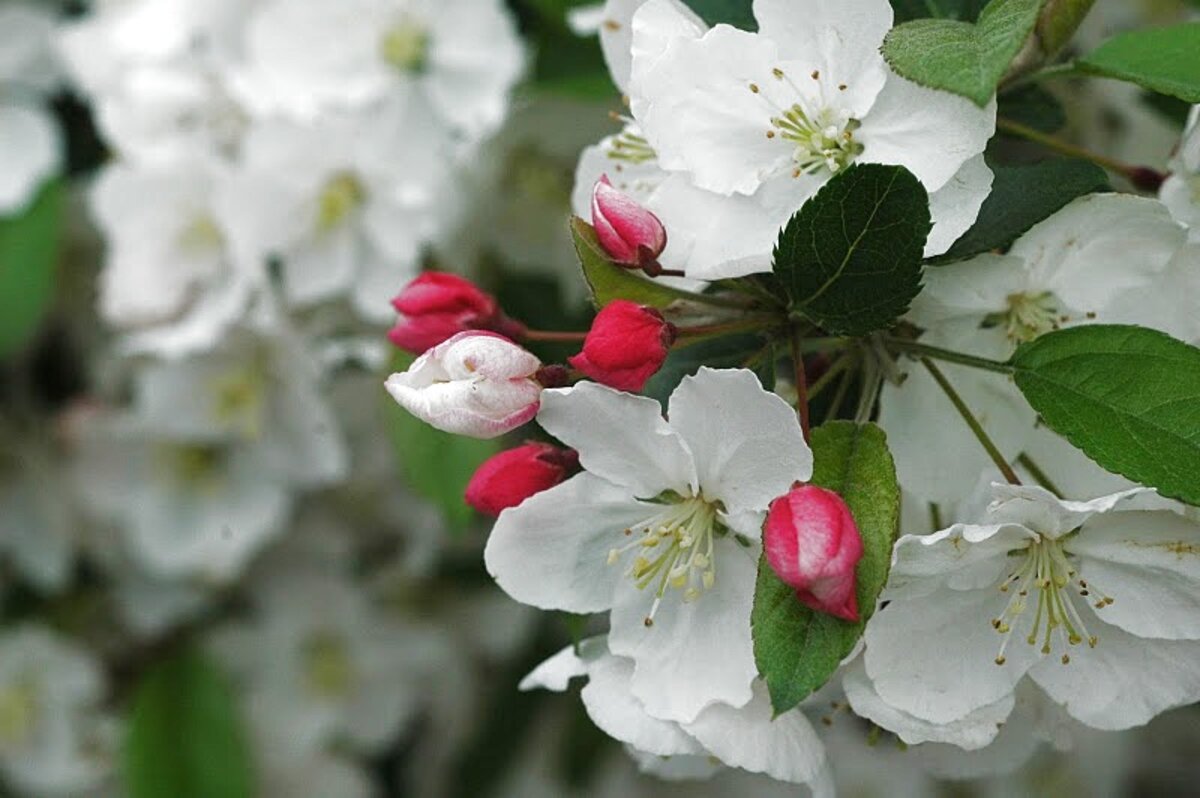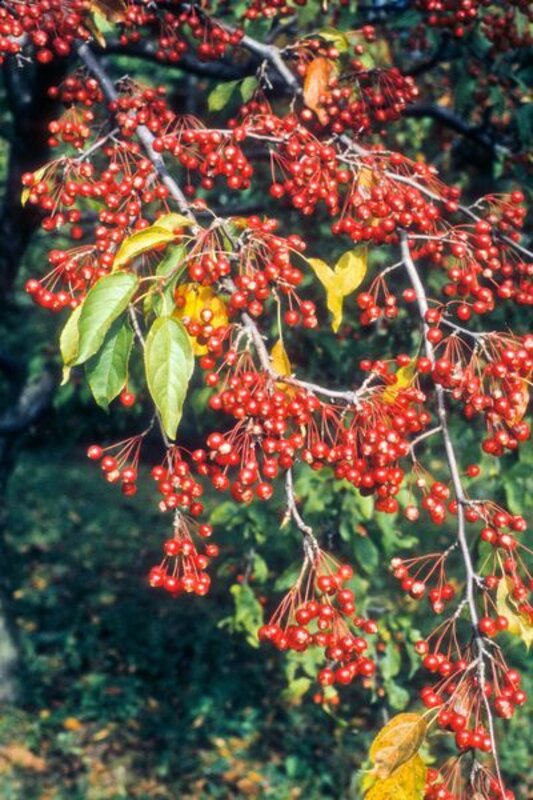How to choose the best crab apple tree
Loading...
In spring, flowering crab apple trees, all , dot the New England landscape (and elsewhere around the US) like ground-hugging clouds of pink, rose, red, magenta, and white. And those gorgeous blooms are preceded by buds that often show more intense or different colors from the blossoms that follow, a floral two-for-the-price-of-one.
The flowers are fleeting, however, lasting two weeks at most. That’s why fall is the time to choose a flowering crab: In fall you can see a tree’s fruits, and the fruits are the crab apple’s main event. They’re as colorful as the flowers — ranging from yellow to orange to purple to scarlet — and they last for months.
Unless I’m visited by gluttonous flocks of cedar waxwings or robins in fall, the fruits stay on my trees from late July into the new year, when they are consumed by birds that hang around in winter.
For the birds and for making jelly
Malus trees with fruits larger than two inches in diameter are apples; anything smaller is a crab apple. Like their big brothers, crab apples are edible, although they tend to be less sweet, even astringent.
should pick a crab with fruits closer to two inches. ‘Dolgo’ is the standard for jelly, but ‘Callaway’ and ‘Ralph Shay’ also are popular. Trees with larger fruits that drop when ripe are messy and therefore are a poor choice for small yards.
If you want to attract birds while enhancing your landscape, choose a cultivar with "persistent" fruits — fruits that don’t drop once they are ripe — and one with small fruits, three-fourths of an inch or less.
There are scores of good choices, including the weeping, pink-flowered ‘Louisa,’ which has yellow fruits; ‘Adirondack,’ with its orange-red fruits and white flowers; ‘Red Jewel,’ with white flowers and bright red fruits; and the red-flowered ‘Prairiefire,’ which has maroon fruits and purple-green foliage.
Avoid crabs — ‘David,' ‘Evelyn,' and ‘Bob White’ are examples — that flower and fruit heavily one year, then sparsely or not at all the next. And a few crab apples never produce fruits: ‘Spring Snow’ and ‘Prairie Rose’ are names to avoid.
What else to look for
It’s not only the fruits (and flowers), of course. There are lots of balls to juggle when choosing a crab apple. You’ll want to choose an appropriate tree size and form for your site.
Trees range from dwarf to 30 feet, and there are rounded, upright, columnar, oval, pyramidal, vase, round spreading, and weeping . I far prefer spreading trees -- such as ‘Liset,’ which has red flowers and fruits and purple-green foliage -- as opposed to upright, vase-shaped trees like ‘Sentinel,’ but the space will dictate what form works best.
Crab apples are plagued by a litany of diseases, so pick a to apple scab, cedar apple rust, and fireblight. Most state provide recommendations for disease-resistant crabs for their regions.
A rule of thumb is to look for newer cultivars: Many of the popular older names, such as ‘Almey,’ ‘Flame,’ ‘Hopa,’ ‘Radiant,’ ‘Sparkler,’ and ‘Vanguard’ are highly susceptible to disease.
If Japanese beetles have invaded your neighborhood, look for trees that have resistance: ‘Harvest Gold,’ ‘Red Jewel,’ and ‘Jewelberry’ are three.
Lists of recommended crab apple cultivars differ on disease resistance.
Boston’s gives ‘Selkirk’ only fair marks for disease resistance. But my ‘Selkirk’ has never shown signs of disease, nor did the trees of Fr. John Fiala, author of "."
So do some disease-resistance double checking before plunking down money for a tree.
There are more than a thousand named flowering crab cultivars, two dozen or so that can be found at local nurseries, and triple that number from online suppliers. Just remember that the trees you find in your local nursery are not always the best to be had.
Do your homework, and think fruit first, size and form second, disease resistance third, and flowers last.
-----
Karan Davis Cutler blogs regularly at Diggin’ It. To read more, click here. She's a former magazine editor and newspaper columnist and the author of scores of garden articles and more than a dozen books, including “Burpee -- The Complete Flower Gardener” and “Herb Gardening for Dummies.” Karan now struggles to garden in the unyieldingly dense clay of Addison County, Vt., on the shore of Lake Champlain, where she is working on a book about gardening to attract birds and other wildlife





